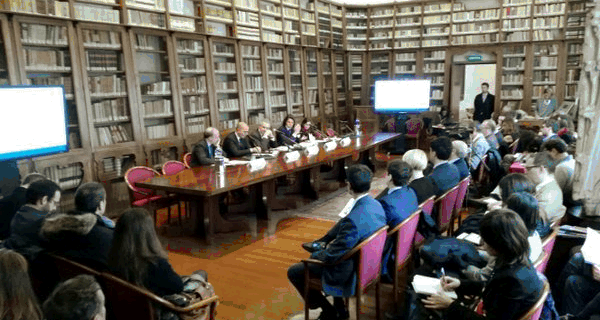
After Expo 2015, the Italian Government has set for the Italian Food sector the objective of increasing its exports to 50 billion euro by 2020. Thanks to an 8% increase in 2015 Italy has already reached the 36.9 billion mark. The upcoming Cibus food fair (to be held in Parma in May), with thousands of buyers expected from around the world, will be a first test of export trends in 2016 and the next few years in the Usa, Europe, and Asia as well as in new markets such as Iran and Argentina.
THE 4 KEY SUCCESS FACTORS – But what is behind the success of the food sector, which is among the leading manufacturers in Italy, with a 133 billion turnover and 58,000 companies? Innovation of production processes, development of new products, focus on tradition and attention to foreign markets, according to a Università Cattolica research group that presented the book “Strategies and performance of the food sector”, published by McGraw-Hill.
THE SECTOR’S FINANCIAL BUSINESS PERFORMANCES – The study has been carried out through the analysis of the financial statements of 448 companies and a questionnaire administered to the 120 most competitive ones. “At the beginning of our investigation we sensed that the food sector had responded well to the crisis, and our objective was that of pinpointing the causes of this state of affairs,”said Professor Lorenzo Ornaghi, President of the Graduate School of Economics and International Relations of Università Cattolica – We naturally expected to analyze economic reasons, but we also focused on learning about the entrepreneurs, their personal journeys, their ability to learn from the experiences of their companies’ founders and, not lastly, the manner in which they address the issue of their companies’ leadership succession”.
THE TWO PHASES OF THE ANALYSIS – The first research phase involved an analysis of the companies’ main financial statements in the seven years from 2007 to 2013. More specifically, the analysis focussed on: revenues, Ebitda/sales (gross margin), Roa (Return on Assets), Net financial position (Nfp), Own funds/Third-party funding, primary liquidity. The second research phase was based on a questionnaire administered to the 120 most competitive companies, representative of the various sectors. “Internationalization – said Fabio Antoldi, director of the Research Centre for Entrepreneurial Development (CERSI) of Università Cattolica and co-author of the book with Daniele Cerrato and Antonio Campati – unequivocally characterizes the Dna of successful companies. This process is not a recent one and it is spreading: new export directions are emerging, mainly in the United States, Canada and Asian markets. This often goes with a remarkable capacity for innovation – incremental, not radical – which is revealed particularly in packaging, new formats and in the launch of new products. Outstanding companies introduce on average three, four innovations a year, focusing on quality but also on tradition, as these are mostly family companies, where succeeding generations guarantee a level of continuity.”
HOW TO ACHIEVE THE GOAL OF 50 BLN EURO – The structural strength of the sector makes the objective of 50 billion Euro of exports by 2020 an achievable goal, as pointed out by Luigi Scordamaglia, president of Federalimentare: “There is a continuous route that starts from the research carried out by Ornaghi on the main Italian food sector companies, passes through the great Expo 2015 showcase which was a unique stage for our agri-food model and a unique platform for business meetings, thanks to the presence of foreign companies, top buyers, investors from around the world, distributors and suppliers, and reaches Cibus 2016. The next edition of Cibus will represent, therefore, an opportunity to consolidate and relaunch the Expo legacy and it will be a new business opportunity with a clear goal: 50 billion in exports by 2020, an achievable objective thanks also to the expansion into new markets where we export not only Made in Italy products, but also what we call Made with Italy, Italian know-how and the efficient and sustainable way of producing excellence”.
FIRST “AFTER EXPO” TEST AT CIBUS 2016 – This argument was reiterated by Antonio Cellie, Ceo of Fiere di Parma, which organizes Cibus: “This research represents a very important stage in the development of Cibus: from the sector’s leading trade fair to permanent knowledge and promotion platform for supporting the Italian agri-food exports. This May, in Parma, 3,000 exhibitors, all strictly within the Made in Italy food sector, will present to the world an extraordinary showcase of our wealth of expertise all along the chain of production, of our capacity for innovation while promoting tradition and geographical areas, and of the anthropological uniqueness of our entrepreneurial and manufacturing fabric”.
